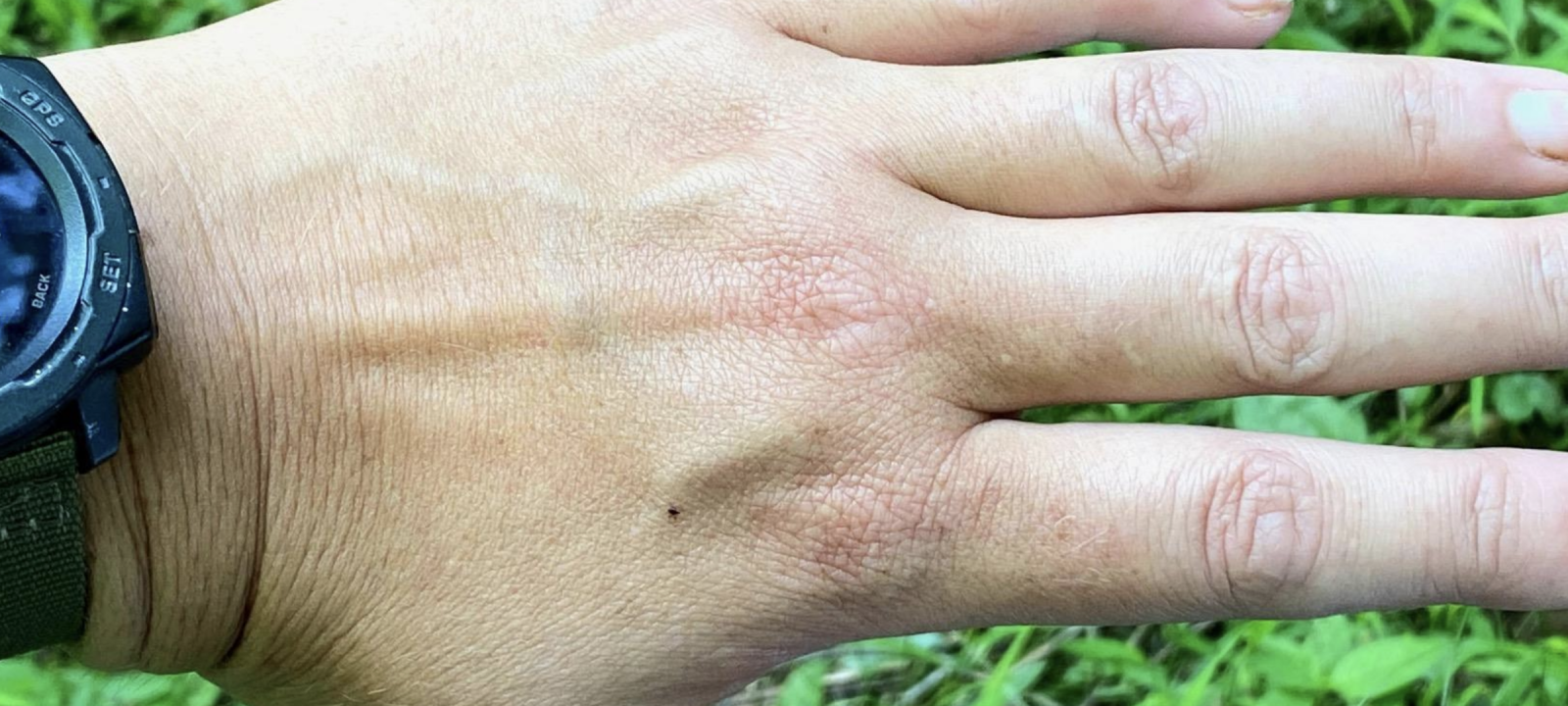April 05, 2022
Residents Urged To Take Precautions Against Ticks, Tick-Borne Diseases

A deer tick in nymph stage.
CHAMBERSBURG, Pa. – As warmer spring temperatures draw residents outdoors, the Franklin County Commissioners and the Franklin County Planning Department are reminding everyone to be vigilant in monitoring for ticks, many of which can transmit diseases.
Ticks can be active whenever temperatures are above freezing. Residents may pick up nymph-stage deer ticks, which are about the size of a poppy seed, between April and September. Adult deer ticks, roughly double the size of the nymph-stage parasites, can be picked up between September and May. Both types may be difficult to detect on the human body, and both can transmit a variety of viruses with serious consequences.
Pennsylvania leads the U.S. in Lyme disease cases each year. Locally, about 50% of adult deer ticks and 25% of deer tick nymphs collected in Franklin County have tested positive for the bacteria that causes Lyme disease. Other areas of the Commonwealth have documented high infection rates of the deer tick virus (DTV), which can cause encephalitis or meningitis. While DTV has not yet been detected in Franklin County, historical data trends indicate the possibility that the virus may already be present in the area or could be present in the future.
As Lyme disease, DTV and other tick-borne disease rates continue to increase, residents should take steps to protect themselves from tick bites and serious illness both before entering and after exiting tick habitats, which can be any wooded or brush-filled area.
Before entering a tick-prone area, individuals can apply insect repellent to their clothing or skin, based on the instructions on their product of choice. Individuals should also dress appropriately. Ticks are easiest to spot on light backgrounds, so light-colored long-sleeve shirts and full-length pants are optimal. Tucking shirts into pants and pants into socks also helps prevent ticks from finding and biting bare skin.
After exiting a tick habitat, individuals should remove all outer garments in an area outside of their main house, such as a garage, which will help prevent ticks from crawling from clothes into other areas of their homes. Clothes should then be transferred to a washing machine to be washed or run on high heat in a dryer for 10 minutes. The final step is to take a shower and perform a tick check, paying close attention to areas around the hair, ears, armpits, belly button, waist, between the legs and behind the knees.
In the event of a tick bite, knowing how to remove a tick properly reduces the likelihood of the insect transferring pathogens; improper removal – including agitating or squeezing the tick – can have detrimental consequences. Follow these steps to safely remove a tick:
- First, use fine-tipped tweezers to pinch down as close to the tick’s head and mouth as possible, being careful not to grasp the tick’s abdomen.
- Once you have a grasp of the tick’s head, pull straight up with even pressure.
- After removing the tick, use rubbing alcohol or soap and water to thoroughly clean the bite area, your hands and tweezers.
- Finally, kill the tick by submerging it in rubbing alcohol, placing it in a sealed container, or by flushing it down the toilet.
For more information on ticks and tick-borne disease prevention, visit https://bit.ly/MTBDP or contact Franklin County Mosquito and Tick Borne Disease Control Specialist Jason Goetz at 717-261-3855 or jgoetz@franklincountypa.gov.
Return to list.

